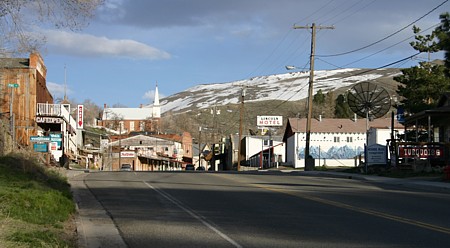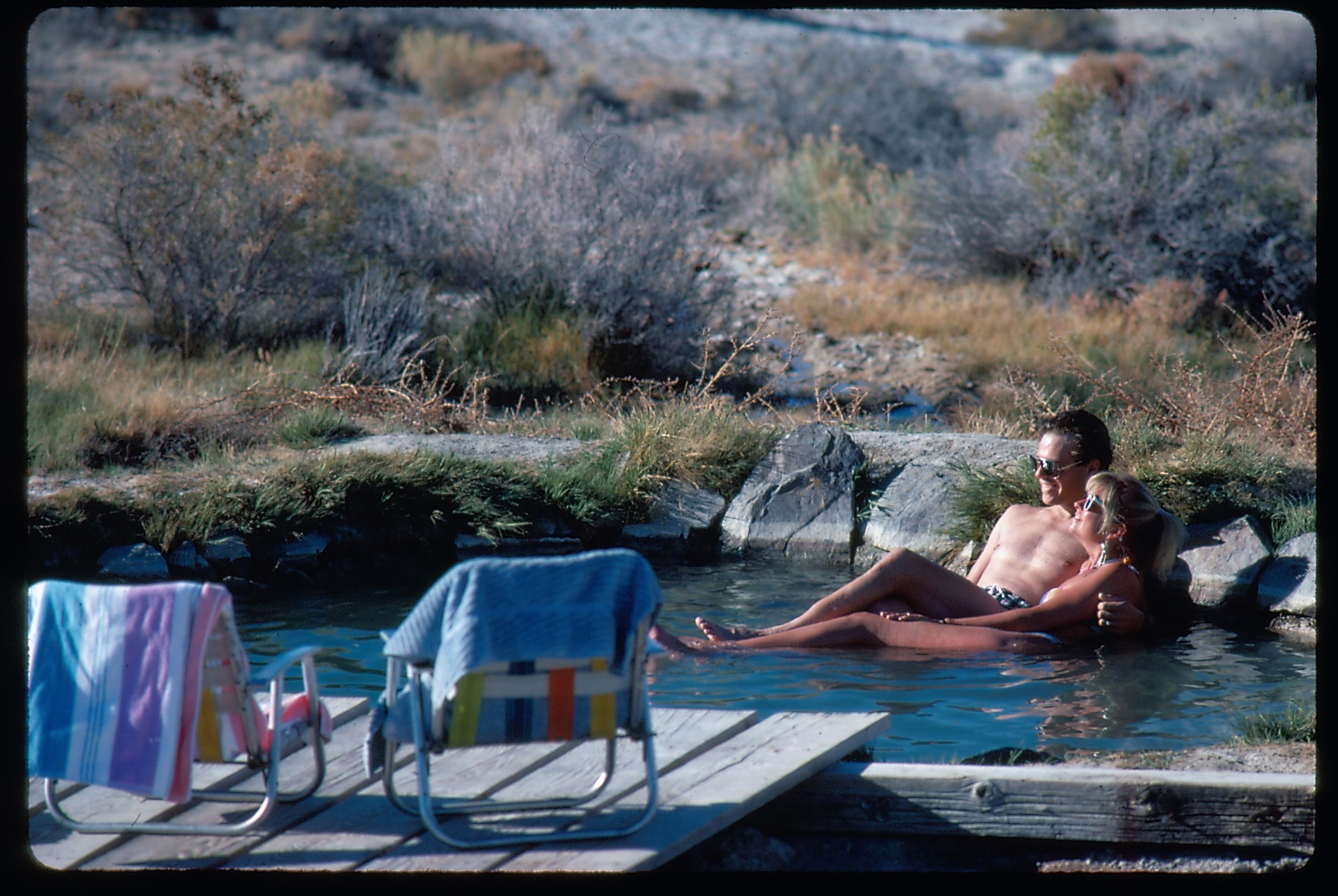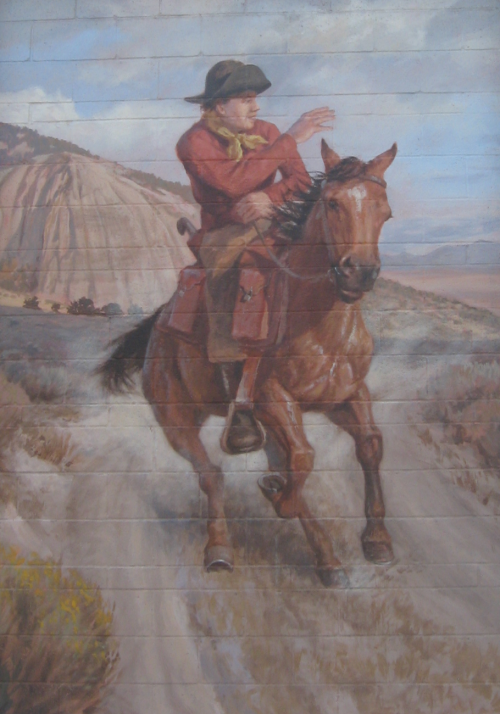Blue Highways: Austin, Nevada
Unfolding the Map
Click on Thumbnail for MapMy three weeks in Turkey are over, and I'm back in the saddle again riding along with William Least Heat-Moon (LHM) as he continues across America. If you want to see some pictures and posts about my Turkey excursion, go to my Muse Gumbo site. In this post it's Austin, Nevada, a sleepy hillside ghost mining town that I happened to pass through myself a couple of years ago. It'll take me a couple of posts to get my Littourati chops up to speed again, but at least we've started! Click on the map thumbnail to locate Austin.
Book Quote
"On three sides of town, prospect holes riddled the mountains and dripped out mine tailings like ulcerated wounds; to the west, several hundred feet down, lay a flat desert valley disappearing into the Shoshone Mountains on the horizon. Main Street, also U.S. 50, made a straight and steep run through Austin, then down the mountain and off across the desert. The side streets were hard-packed, oily sand, some with gradients that would test a donkey, and the rutted sidewalks, washing down the slope, still had their Old West canopies. Because Austin is without level land, many of the houses had been built into terraced cutouts so that from their porches people looked down onto the roofs of buildings along Main Street."
Blue Highways: Part 5, Chapter 7
 Photo by Chris Ralph at The Rock Hound's Corner Click on photo to go to site.Austin, Nevada
Photo by Chris Ralph at The Rock Hound's Corner Click on photo to go to site.Austin, Nevada
On our trip out through Nevada, we drove through Austin. I remember driving up from a plain into some mountains, cresting, and then a steep drop on Hwy 50 through town as we looked out on the flat plain below stretching toward the next set of mountains. Austin seemed unremarkable to me then, and because we were on a schedule we didn't stop but kept moving right along.
However, it was remarkable in one way in which LHM also finds of interest. Before I visited Hazard, Kentucky in the Appalachians, I had never seen cities or towns laid out along a steep hillside before. I thought it extremely cool that towns could have streets overlooking other streets, and porches of normal houses overlooking other houses' rooftops. To lay a city out in that way really fascinated me, even though I could see the logic of the layout. The only other way to lay a town out in a deep valley with steep hillsides is to follow the valley, which could lead a town to stretch for miles and miles. In the day of the car, that would not be such a problem, but in the days before cars when many of these towns were being laid out, that would have made it very difficult for people to go to do basic tasks such as get supplies and food. Keeping the town compact would have been much more important.
You find a lot of these types of towns in the mining areas of the west. On a trip into Arizona, my wife and I visited Jerome, a small mining town perched high on a mountainside. The town was built into a mountainside so steep that one of the buildings actually, over the course of time, slid from one street down to the next. Another mining town in Arizona that we visited, Bisbee, where a certain color of turquoise is found, had a similar layout. Walking the main street meant walking uphill as the street followed what used to be a gulch. Taking side streets up from the main street often meant a steep climb. If one lived in Bisbee and didn't have a car, one would be in really good shape from the daily workout!
On our trip through Nevada, the only other place we visited that had a similar layout was Virginia City. But if you want to eschew the tourist areas, you probably won't go to Virginia City because it's whole purpose now is to cater to tourists. The main street was full of all kinds of kitsch, but we did find a very cool little museum on a back street, steeply downhill from the main drag.
Living in a town like that, I can only imagine, would cause a rethinking of privacy. Presumably, one would want to live higher up, because that would preserve privacy. If you lived farther downhill, you could be observed by uphill neighbors as well as the people who lived to either side. In a town that is flat, you wouldn't necessarily have that kind of problem.
But, the perspective engendered with such a town would also be changed. How one viewed the world would have to be affected by whether they lived up the gulch or down the gulch, up higher on the valley walls or lower on the valley walls. The light would last longer in the evening the higher one resided, and would arrive earlier in the morning. Noise from below might be muted, but I can also imagine that echoes from below would be more discernible. Would a person who lived higher up be more removed and aloof from the town? Would a person who lived below be more active and sociable by necessity?
I don't have answers to these questions, I just pose them as thought exercises. However, one thing is clear to me through all my travels. If humans choose to live somewhere, well, they find a way to make it work whether it's temporary or permanent. Certainly, there are examples of abandoned towns and cities all over America and the rest of the world. However, most of those places enjoyed, even for a few evenings in the case of the shortest lived, the human activities that attempt to build a community. Austin, Nevada is but one place, in the middle of a naturally arid and harsh landscape, where people succeeded. in building something long-lasting. Obviously, we succeed more often than we don't.
Musical Interlude
It isn't that I loved O Brother Where Art Thou (I really did), but I really like the song In the Big Rock Candy Mountains. It shows that everyone in their situation hopes for better things, even if the utopia is completely rooted in their own experience. We used to joke that our dog, who was rescued, hit the big rock candy mountain when she came to our house. But I too would like to reach the big rock candy mountain. Who wouldn't?
If you want to know more about Austin
Austin, Nevada
Ghosttowns.com: Austin
The Historical Society of Austin, Nevada
TravelNevada.com: Austin
Wikipedia: Austin
Next up: New Pass Station, Nevada




 Tuesday, June 7, 2011 at 6:26PM
Tuesday, June 7, 2011 at 6:26PM



